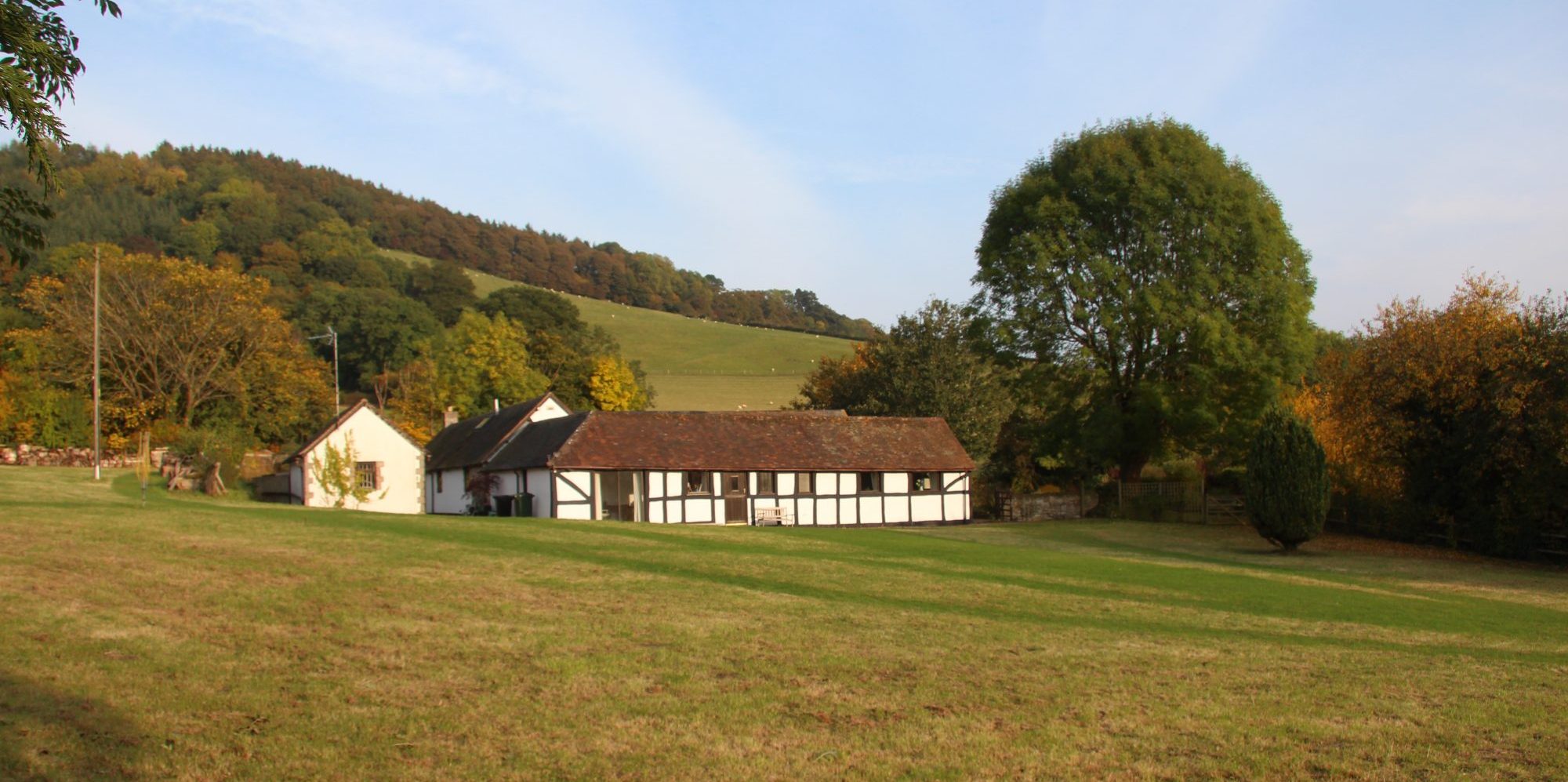I’ve never been a great fan of roses. Well that’s not true: a healthy rose when fully in flower is a wonderful sight and if combined with sweet fragrance it is heavenly. The trouble is that so often roses are not healthy – black spot, mildew, aphids all disfigure the plants. The flowering can be short, sporadic and disappointing; the growth dishevelled and sparse. Plus I have never had much success growing them, though I must admit I haven’t tried very hard, put off I suppose by their reputation for being difficult plants and expecting them to disappoint. The roses I have inherited in Shropshire have changed all that.
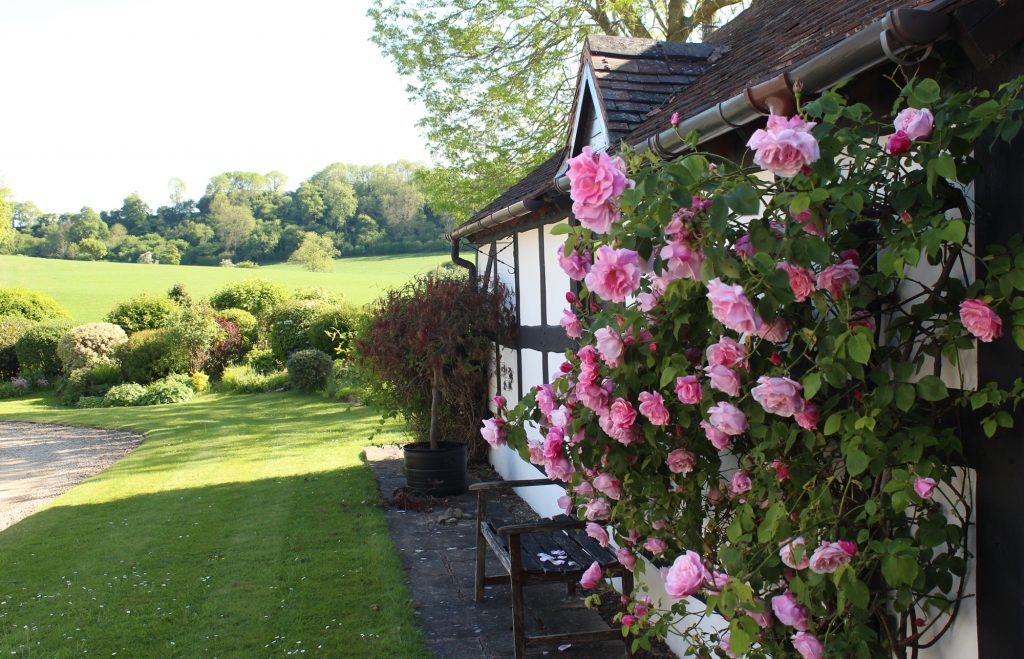
On the day we moved in we were greeted by the spectacular sight of a fragrant pink climbing rose, covered in blooms: superb. Then, in the first few weeks in our new home, ten established roses in the raised bed in front of the house, all came into bloom and repeated flowering all through the summer and well into the autumn. Although the plants were a bit straggly, most had a delicious sweet scent as well as beautiful blooms – definitely worth cherishing.
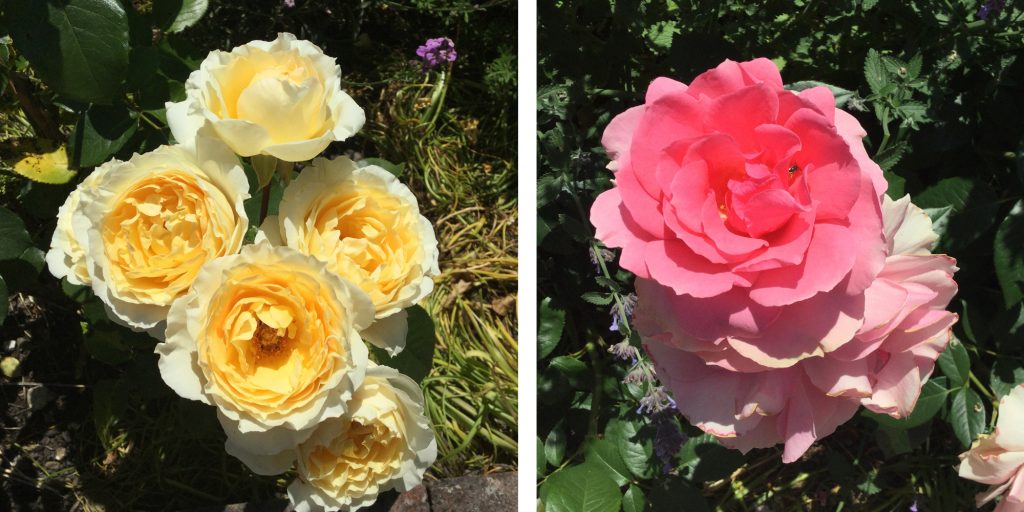
As well as that, amongst the shrubs of the main shrub border, were five tall shrub roses, which again bloomed profusely all summer long, again with delightful fragrances. Obviously, the conditions in our new garden suited roses, so I determined to care for them vigilantly; I pruned them hard but carefully in the spring and spread compost around their bases and have been rewarded by good healthy growth and lots of flowers. I am dead heading assiduously – a task I thoroughly enjoy; what can be nicer than wandering around the garden examining the flowers in detail, delighting in their colours and fragrance and noting new flower buds about to break? Not to mention the satisfaction of squashing greenfly!
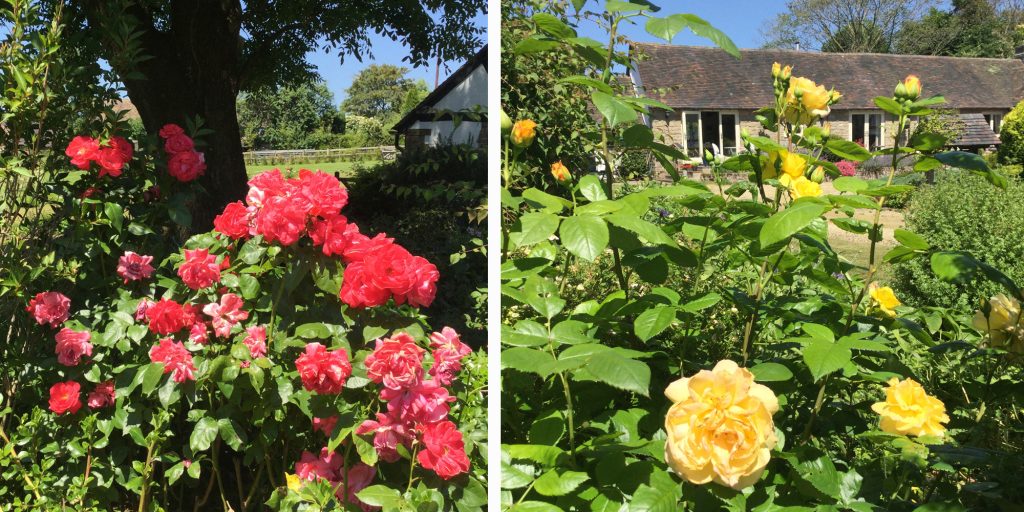
My thoughts then turned to using roses in our new main garden. Although I had an overall plan for the our whole plot, which had not included roses, I let my ideas evolve and after visiting other (much grander) gardens, we made the decision to divide the main garden with a new fence, to separate the ‘formal’ garden area from the ‘natural’ area. I have always wanted an old fashioned shrub rose, so I decided to use them as an informal hedge along part of the new proposed fence. We are not far from the famous David Austin Rose nursery and we spent a very pleasant day wandering through their fabulous rose gardens and pondering our options over a tasty lunch (much recommended).
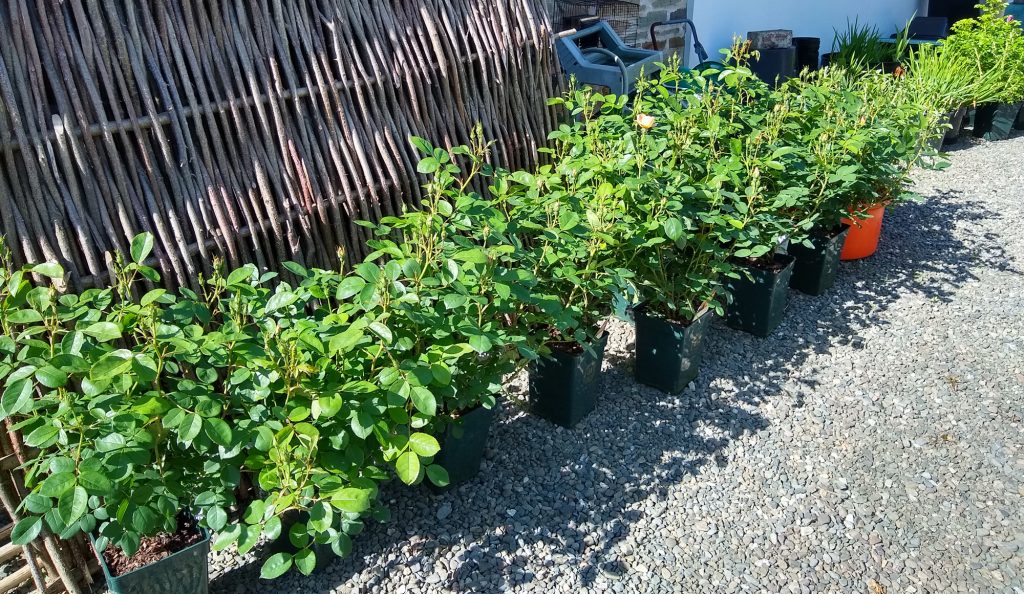
We came home with five bright magenta pink Rosa Rugosa plants and ten English Shrub Roses called Lark Ascending which has apricot, lightly fragranced blooms. Both are repeat flowering, both should reach five feet and both are described as having a healthy robust constitution – they are going to have to withstand a lot of wind! Before the very hot weather arrived, we set about planting our new roses taking care to give them rose feed and a good planting mixture to help them establish in our clay soil; and plenty of water during the heatwave.
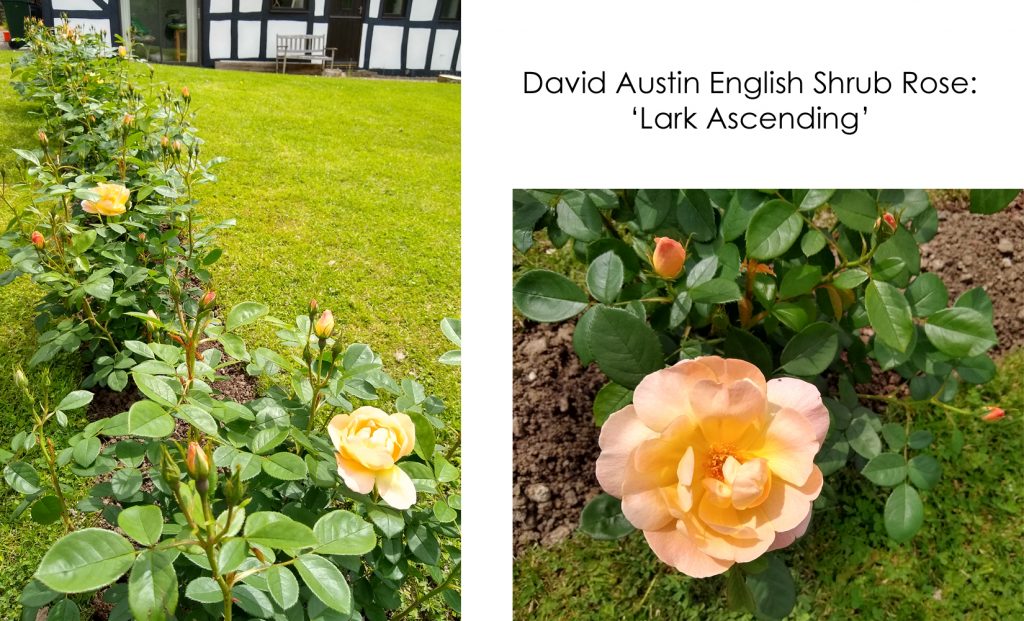
I then planted eight of the Lark Ascending roses to create an informal hedge to separate off a small area which, rather grandly I am calling the gold-garden; I placed the remaining two apricot roses along with montbretia and red hot pokers from the shrub border, and three yellow potentillas along two of the other sides to start to create this gold colour scheme. It then seemed that some sort of feature was necessary in the centre of this small area – for the time being a pile of bricks and flat log gives a focal point until I find something which catches my eye. Planting in the height of summer – and especially in the current heatwave – is a risk, but I’m hopeful that the robust roses we have chosen will establish themselves and help create the framework of our new garden.

